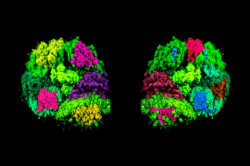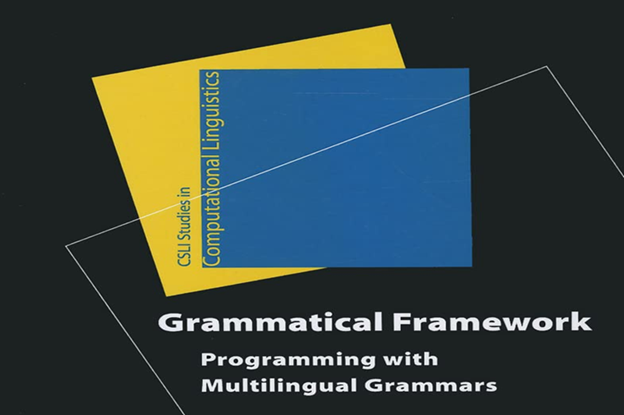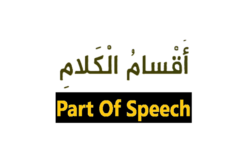Abstract
Semantics, the study of meaning in language, provides a crucial lens for understanding how speakers communicate and interpret messages (Aisyah, 2021). In the case of Arabic, a language with a rich history and complex linguistic structure, semantics assumes particular importance. Arabic, as a Semitic language, possesses unique characteristics that give rise to distinct semantic patterns. This article aims to explore these patterns, shedding light on the mechanisms that govern how meaning is constructed and perceived, examining the intricate relationship between words, meanings, and their contextual interpretations.
Introduction
Language, arguably one of humanity’s most powerful tools, enables us to share thoughts, ideas, and experiences across time and space. At the core of this ability lies semantics, the study of meaning in language. Without a solid grasp of semantics, communication would devolve into a jumble of meaningless sounds and disconnected symbols. Semantics offers the structure needed to understand how words, phrases, sentences, and even full conversations convey meaning, enabling us to navigate the complexities of communication and interpret messages with clarity and insight. In this article, we will explore the unique features of Arabic that shape its semantic landscape, including its morphology, root system, and the diverse ways meaning is conveyed through grammar and rhetoric. This study will also touch upon the evolution of Arabic semantics, from its classical roots to contemporary usage, and highlight the ongoing debates and research in this dynamic field.
I. The Building Blocks of Meaning: Roots and Morphology
Unlike languages with concatenative morphology such as English or French, Arabic employs a unique root system where core semantic concepts are encoded within shared consonantal patterns, semantic patterns creating vast networks of related meanings Boudelaa and Marslen-Wilson (2015). The nature of Arabic semantics is deeply rooted in the structure and history of the Arabic language itself. One of the defining features of Arabic is its reliance on root words, which are typically three consonants that form the foundation of related words.
This system allows a single root to branch into various meanings and forms, creating a rich linguistic network. For example, the root k-t-b carries the core meaning of “writing,” from which words like kataba (he wrote), kitaab (book), kaatib (writer), and maktab (office) are derived. It provide examples to demonstrate this process (e.g., k-t-b, meaning “write,” and its derivatives like kataba “he wrote,” kitab “book,” maktab “office”). Understanding these morphological patterns is crucial for deciphering the semantic relationships between related words and grasping the subtle nuances of meaning. The ability to recognize the root and identify the derivational pattern allows speakers and learners to infer the potential meaning of unfamiliar words, making the lexicon more transparent than it initially appears.
Morphological Patterns: The application of different morphological patterns to the same root allows for the creation of a wide range of words with nuances of meaning. These patterns often indicate tense, voice, aspect, and derived concepts.
Impact on Semantic Relations: This root-based system facilitates the understanding of semantic relationships between words. Words derived from the same root are often conceptually related, which aids in vocabulary acquisition and comprehension.
2. Lexical Semantics in Arabic
Polysemy and Homonymy: Arabic words, like those in other languages, often exhibit polysemy (multiple related meanings) and even homonymy (multiple unrelated meanings). The context, whether linguistic or situational, plays a vital role in disambiguating the intended meaning. Discuss the prevalence of words with multiple related meanings (polysemy) and words with the same form but unrelated meanings (homonymy). Provide examples and explore the challenges of disambiguation.
This approach to word formation not only highlights the significance of root words but also leads to phenomena such as polysemy and homonymy. Polysemy occurs when a single word has multiple meanings, while homonymy involves different words that sound alike but have distinct meanings. The Arabic language displays these characteristics prominently, as many words can shift in meaning based on context or usage.
3. The Role of Context in Arabic Meaning
Context is fundamental in shaping meaning in the Arabic language, greatly affecting how words and phrases are understood. The way a message is interpreted can change based on the situation, the speaker’s intent, and the audience’s background. For instance, a greeting like “salaam” can convey warmth in a casual setting but may also serve as a formal acknowledgment in a more serious context.
Pragmatics, the study of how context influences communication, plays a significant role in this process. It helps us comprehend the subtleties of meaning that go beyond the literal interpretation of words. For example, the phrase “I need a pen” could suggest an urgent request in a classroom but might imply a joke among friends. These variations highlight how context shapes our understanding of language, making it more nuanced and layered.
In conclusion, context and pragmatics are central to grasping the meanings in Arabic. Understanding this interplay enriches our appreciation of the language and allows for clearer communication. The nuances of Arabic semantics remind us that words are not just symbols; they are shaped by the rich landscapes of culture and context that surround them.
While morphology provides a foundational framework, context and pragmatics play a vital role in determining the precise meaning of a word or phrase. Context encompasses the surrounding linguistic environment (co-text) and the situational context (social setting, speaker intentions, and shared knowledge between interlocutors). Pragmatics focuses on how context influences the interpretation of meaning beyond the literal level.
Ambiguity Resolution: Arabic, like any language, exhibits lexical and structural ambiguity. Context often provides the necessary clues to disambiguate between multiple possible interpretations. For instance, the word ‘عَيْنٌ (‘ayn) can mean “eye” or “spring.” The surrounding context will typically clarify the intended meaning.
Figurative Language: Arabic is renowned for its rich use of figurative language, including metaphors, similes, and metonymy. Understanding these figures of speech requires knowledge of cultural conventions and an ability to infer the speaker’s intended meaning beyond the literal interpretation.
Speech Acts: Arabic, like other languages, employs different speech acts (e.g., requests, promises, apologies) to achieve specific communicative goals. Pragmatic analysis helps determine the intended force and effect of an utterance based on its form, context, and the speaker’s intentions.
4. The Foundation of Meaning: Lexical and Compositional Semantics:
Polysemy and Homonymy: Arabic words, like those in other languages, often exhibit polysemy (multiple related meanings) and even homonymy (multiple unrelated meanings). The context, whether linguistic or situational, plays a vital role in disambiguating the intended meaning. Discuss the prevalence of words with multiple related meanings (polysemy) and words with the same form but unrelated meanings (homonymy). Provide examples and explore the challenges of disambiguation.At its most basic level, semantics addresses the meaning of individual words, known as lexical semantics. Each word carries a set of semantic features, or components of meaning, which differentiate it from other words in the lexicon. For example, the word “dog” might be characterized by features such as [+ANIMAL], [+MAMMAL], [+DOMESTICATED]. Understanding these features is crucial for comprehending the meaning of individual words and their relationships to each other.
However, meaning is rarely confined to single words. Sentences and phrases are constructed by combining words, leading to the realm of compositional semantics. This field investigates how the meaning of a complex expression arises from the meanings of its constituent parts and the way they are structurally combined. Compositionality is a powerful principle, allowing us to understand novel sentences based on our knowledge of individual words and grammatical rules. This is where formal semantic theories, such as Montague Grammar, shine, providing rigorous frameworks for analyzing and predicting the meaning of complex expressions.
5. Beyond Literal Meaning: Ambiguity, Inference, and Pragmatics:
While lexical and compositional semantics provide a foundation, they are often insufficient to fully understand the intended meaning of a message. Language is inherently ambiguous, and words and phrases can have multiple possible interpretations depending on the context. Semantic ambiguity can be lexical (e.g., “bank” as a financial institution or a riverbank) or structural (e.g., “old men and women” – are all the women old too?). Semantics helps us identify these ambiguities and, in conjunction with contextual information, resolve them to arrive at the intended meaning.
Furthermore, communication often involves unstated assumptions and implied meanings. Inference allows us to draw conclusions that are not explicitly stated in the utterance but are nevertheless implicitly conveyed by the speaker. This requires leveraging our world knowledge, common sense reasoning, and understanding of the social context. For example, if someone says, “I’m out of gas,” we can infer that they will likely need to find a gas station.
This leads us to pragmatics, which focuses on how context and speaker intentions influence meaning. Pragmatics goes beyond the literal meaning of words and considers factors such as speaker beliefs, conversational maxims, and social conventions. It addresses questions like: What is the speaker trying to achieve by saying this? Is the speaker being sarcastic or ironic? Pragmatic understanding often involves recognizing implicit meanings, interpreting indirect speech acts, and appreciating the subtle nuances of human communication.
Conclusion
The semantics of the Arabic language is a rich and multifaceted area of study. From its unique root system and morphological processes to its contextual sensitivity and historical evolution, the ways in which meaning is constructed and interpreted in Arabic are both fascinating and complex. Understanding Arabic semantics is crucial not only for linguists but also for anyone seeking to engage effectively with the Arabic language, its culture, and its literature. This field continues to evolve as researchers explore new avenues for understanding the intricate web of meaning woven within the Arabic language.























+ There are no comments
Add yours